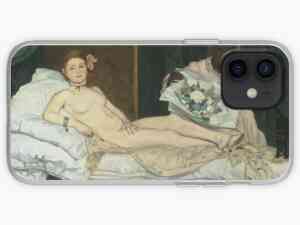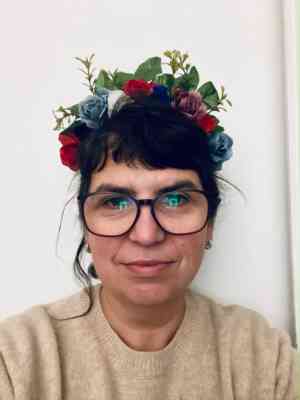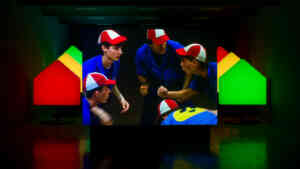Feminist Instagram – artists and other creatures

And again I spent hours on Instagram browsing through an eclectic mix: design posts (“Where would you spend your ideal Saturday?”), digital exhibitions (“Mindblowing show opening this Friday #face #control #extractivism #computer #vision #accused”), food porn (“Traditional German Christmas goose with all the trimmings”). Then there are the internet memes – one I really like is “Texts From Your Existentialist" that uses famous paintings from art history and captions them with funnily dark aphorisms (“Does this existential crisis make me look fat?”)
Life on Instagram is full of female bodies. But the intended spectators are not only men like there were if we look at art history (“Men look at women. Women watch themselves being looked at,” writes John Berger in his seminal Book “Ways of seeing” in 1972). There is a bubble for everyone: the yoga influencers, the food porn lovers, the body positivity crowd, momfluencers who earn their money by being moms, the van life people (and this is just a random selection from the top of my head).
But there is also art – lots of it – on Instagram. And of course feminism. But while a short post like this one can’t give a comprehensive overview, I just want to give a few pointers and thoughts coming from the perspective of someone who has been around the internet for while.
Social media in a way did deliver on the promise of democratization, opening up spaces where everyone can speak, build an audience, get together. But it comes literally at a prize because lest we forget: we still live in late capitalism where even the most intimate feelings are subjected to the logic of the market and made a commodity.
So the bodies of Instagram are rather ambiguous. On the one hand it is a space for girls and women to construct their own narratives, exchange experiences, make their voices heard – and if they earn some money for it, why should we begrudge them.
On the other hand, at the same time it is a place where the commodification of bodies reaches new levels. A leaked presentation of Facebook’s own research (Facebook, now renamed Meta, owns Instagram since 2012) says that “thirty-two per cent of teen girls said that when they felt bad about their bodies, Instagram made them feel worse”. The reason for this is “social comparison”. The users compare their own lives with the seemingly perfect ones they see on the screen and fall short. The research adds that pressure to share only the best moments and to look perfect could pitch teenagers into depression, low self-esteem and eating disorders.
But for many young people Instagram is also a haven. There is a sizable community of young women learning to love themselves and their bodies, sharing experiences and learning they are not alone. For many young women Instagram was the place where they found likeminded peers that politized their everyday life. I would argue that the body acceptance movement wouldn’t have become mainstream were it not for the people of Insta (and the other social media platforms).
Then there is the art. Feminist artists have used the platform as a tool to construct and reconstruct identity. The old adage “On the internet, nobody knows you’re a dog” (originating from a New Yorker cartoon published in 1993 shows how the play with identity is intrinsic to the digital networks from the beginning. One part of the discourse of the 1990s was that the internet would deconstruct identities in a way that it wouldn’t be important anymore if one was a man or a woman. Without a visible body you could present yourself as whatever you wanted. In this simplification this was never the case – we still live in a physical world whose constraints and context not only influence but determine the digital. But the digital still changed things, made them more fluid, deconstructed them.
Feminist (and female) artists from the 1960s onward have worked around the connections between identity, body and the social. They have turned around the century long structure of men looking, and women watching themselves being looked at that I mentioned at the beginning of this post. Sophie Calle, Lynn Hershman, Cindy Sherman are just a few of the artists who have been looking back out of the frame, re-constructing and re-framing the socially acceptable images of femininity, analysing the roles society has prescribed for them by trying them on as a fictional costume.
Combine this tradition with the internet’s openness to construct your identity freely and without constraints and you find young female artists like Amalia Ulman and her work “Excellences and perfections” who poses questions like how do we present ourselves on the internet, why are we (the audience) so hungry to look at other people’s lives, what does the urge to look at a constructed authenticity mean for our world?
In discussing her video her video “Who’s Sorry Now” (2017) the artist Molly Soda connects these different lines of thinking:
“I think we all present a character online and we’re turning ourselves into these avatars and creating these 2D personas for people to see. It’s a very human impulse to want to do that because you can’t do that in real life. And so when you’re controlling your own image and how it’s being put out into the world you can create a narrative about you. I think it really affects the way people interact with each other because it’s almost like we’re not seeing everyone’s humaneness. Molly Soda tries to acknowledge that in some ways or tries to push back against that.”
To learn more about this new generation of artists we could look at the exhibition “Virtual Normality: Women Net Artists 2.0” at the Museum der bildenden Künste Leipzig which 2018 put together eleven artists working in the environment of social media and examining “the female gaze in the age of digital stagings of identity”. These artists are continuing the investigation of what being “female” means in our society by using a super-femme aesthetic playing with visuals of cuteness, girlishness, the colour pink, and other female coded signage. They are pushing the boundaries of what femininity is and at the same time deconstructing current (but already century old) tropes to open up new spaces and recode gender and sex.
The collective Laboria Cuboniks begins their Xenofeminist manifesto with “Ours is a world in vertigo. It is a world that swarms with technological mediation, interlacing our daily lives with abstraction, virtuality, and complexity.“ This vertigo is what our daily lifes are made of. But it lies not outside of us but is the heart of the matter and we must learn to navigate it so we are not to be swallowed up by the incessant flow of images coming towards us on Instagram and other platforms.


